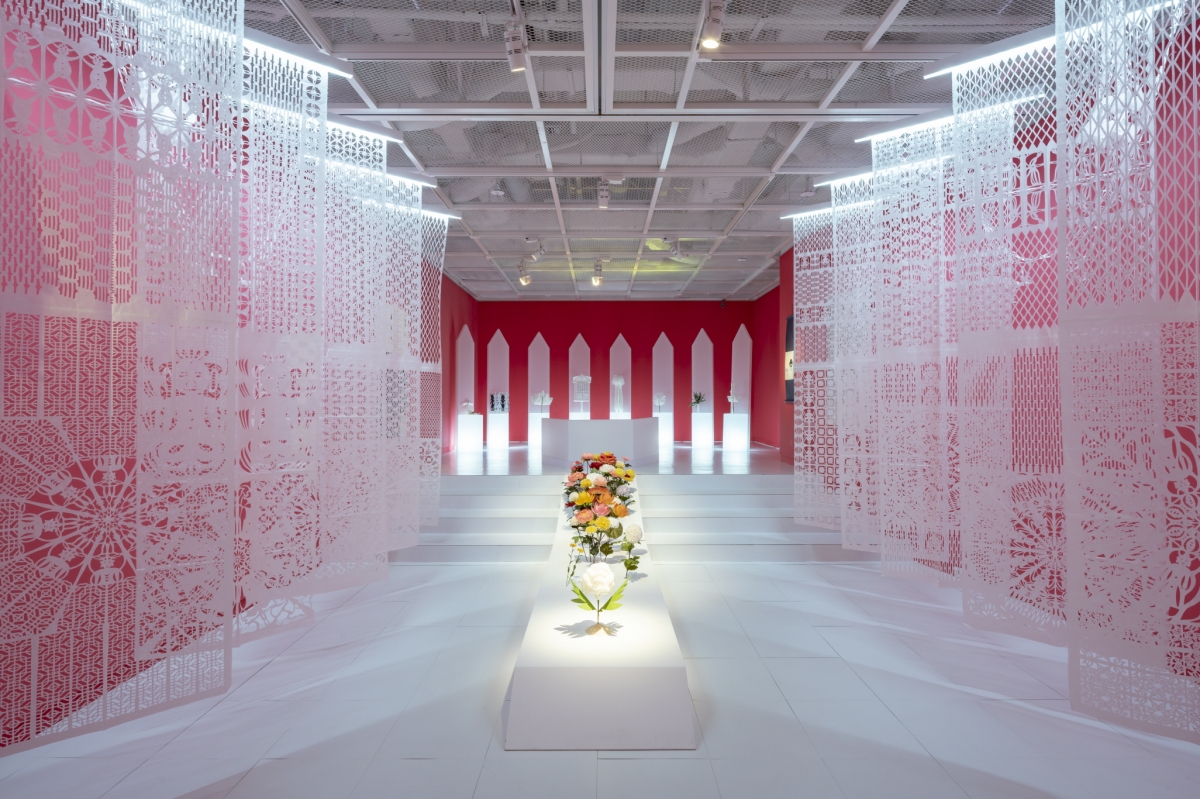There was a time in which one believed that invisible beings governed the world: the world and the next world were considered separate, and rituals took place in daily life, calling for recognition of an existence beyond present reality. A rite was made within its own sphere, in which paper flowers, dolls, amulets, a sacred spiritual items invoked the other or supernatural beings and asked them stay in designated realms. In the modern era, built with hard reinforced concrete structures, these activities and objects are no longer familiar.
‘Shinmulji,’ held from July 5 to 25 at the Uran Cultural Foundation in Seongdong-gu, Seoul, is an exhibition intending to shed light on the forgotten shamanistic ceremonial tools. Through ‘Shinmulji’ a sacred object made of hanji (Korean paper), the exhibition scrutinises the traditional worldview that was eliminated and erased in the process of modernization, to present a modern perspective on how hanji has expanded its world view to become a new object.
In the exhibition hall of red walls, works by artisans performing traditional ceremonies and contemporary artists have been arranged. First, white ritual paper tools have been placed at the edges of the wall and on all four sides to frame the exhibition space. The thin hanji tent Seolwi Seolgyeong, fluttering in the wind, is used in an exorcism in Chungcheongnam-do Province, preventing the entry of ghosts and keeping them captive. It is full of plants and animals, character shapes, and intricate geometric patterns, making it look like a ‘paper net’ of a complicated production process: two whole sheets of paper have been attached, folded to fit the two sides, and cut each pattern with a knife. These sacred papers form a strange atmosphere at the edge of the exhibition hall.
Unlike Seolwi Seolgyeong, which captures ghosts, Gime is a tool for meditation to establish a place that connects gods and humans. It is used mostly at Jeju Gut and ranges in form and type from human shapes to flags and flowers. In the exhibition, the objects were placed on a chair-shaped platform in white acrylic or carefully installed on the wall of the gallery. It allows people to appreciate these items like objects while preserving the meaning of worship.
Contemporary artists have carefully intervened in this realm exploring the significance of ceremonial tools, revealing the potency of their meanings and attempting to reinterpret their traditions. Lee Yujia’s Wahae-gyeong-Floating Shadows features a video of the craftsman’s production processes and the traditional rituals they perform. Lee Inan’s oral installation works examine the omitted and missing values in modern historical description, while Kim Beom interprets the crafting techniques used in hanji shamanistic tools, such as Blooming and Withering and A Random Life, which are made by folding up a piece of paper or attaching tiles.

Exhibition views of ‘Shinmulji’




